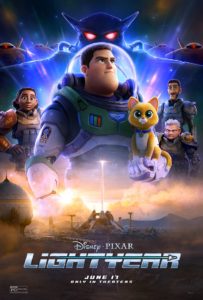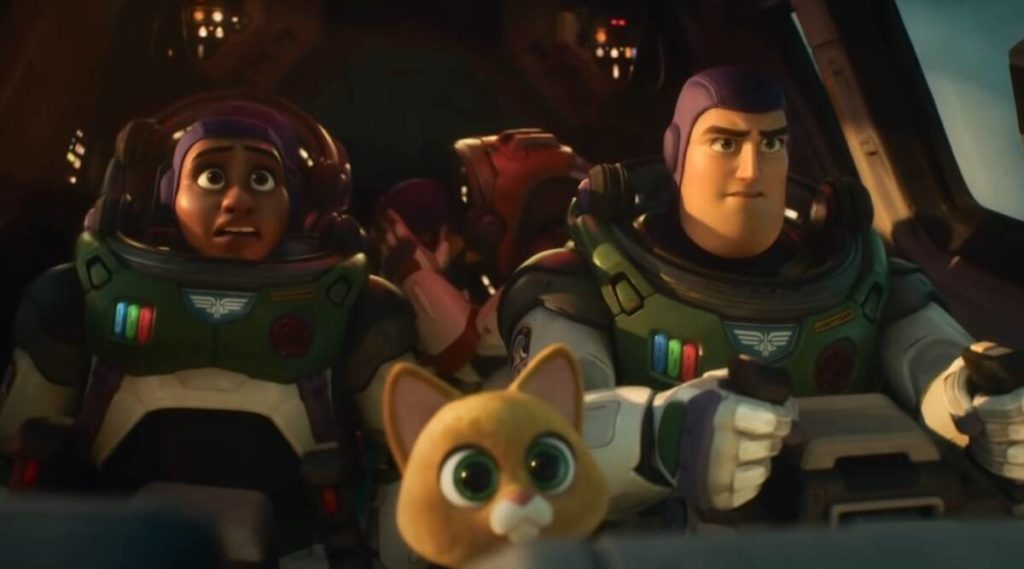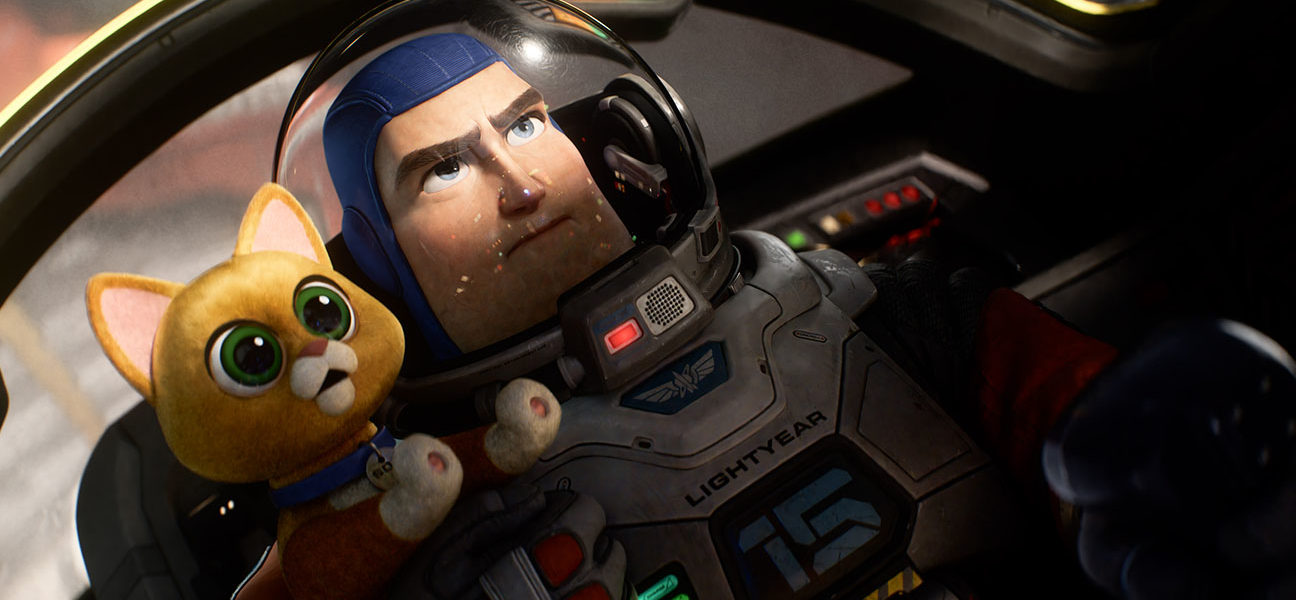Pixar puts the Toys Away for this new Story
DIRECTED BY AGNUS MACLANE/2022

In this summer of unfettered movie nostalgia punching the hyperdrive awfully hard, one of biggest lessons thus far is that going really fast solves everything. Tom Cruise demonstrated this nonsensical truth in the simplistic phenomenon that is Top Gun: Maverick. As that film’s afterburners refuse to cool, Pixar is making its far- overdue return to theaters with the Toy Story-adjacent sci-fi adventure, Lightyear.
Unlike Top Gun: Maverick, which is plenty content in being a patched-up remake of its original, there’s an inescapable convoluted quality about Lightyear. How to explain to mainstream audiences that this isn’t the Tim Allen-voiced Buzz Lightyear that we know and love, but rather the heretofore nonexistent blockbuster movie that inspired young Andy to want the toy of the character in the first place? Leave it to Pixar to completely explain it in three simple opening on-screen sentences, which go something like this: “In 1995, a boy named Andy got a Buzz Lightyear action figure for his birthday. That toy was based on his favorite movie. This is that movie.”
What follows is a film that wouldn’t and couldn’t possibly exist in 1995, or any time prior. To what degree one chooses to hold that against Lightyear is completely in the eye of the beholder. Back then, animation of this caliber was decades in the future. Such limitations were why Pixar opted to make the stars of its debut CGI feature (in fact, the debut CGI feature) plastic rather than flesh, blood, and hair. Factor in that reality with the very contemporary Disney lessons at its core and even a big progressive nudge insofar as a same-sex marriage is depicted, and there’s just no way that Andy would’ve seen the very 2022 Lightyear in 1995.

That’s not to mention the propensity of glib humor, once novel back then but now utterly dominant. Indeed, these sorts of animated event movies have come a long way since their inception, even as the form has calcified into an aesthetic so ubiquitous that when social media users recently took to filtering their own faces into modern animated likenesses, it was simply referenced as “the animation character filter”.
A lingering and epidemic problem with mainstream animation is that if you were go in unaware with eyes closed, only listening to the film, you could immediately deduce that it is in fact a studio-generated animated feature. There was a time when every animated feature didn’t sound like a parade of celebrity voices showing off into a microphone for their kids or grandkids. It would’ve been nice if Lightyear advanced beyond such grandstanding, but alas, it does not. Considering what it’s supposed to be within the Toy Story world, this aspect is particularly unfortunate.
The showboating compounds as Buzz Lightyear’s Captain Kirk-esque mission logs are repeatedly called out as performative or weird (he defends the practice as a coping mechanism). But then, it’s safe to say that character narration is a lost art in film and television. These days, when it does crop up, it is never not subverted. “You’re monologging again” was once clever subversion of a tired trope. Now, it is the tired trope. One wonders if younger viewers even understand the root of these gags.

If the prospect of a feature film all about the Buzz Lightyear that the Buzz Lightyear we’ve known and loved since 1995 isn’t doesn’t sound immediately appealing, that’s understandable. In all four Toy Story films, Buzz’s role is rooted in dealing with identity crisis. Without it, the character is suddenly uninteresting. Initially, toy Buzz’s whole conundrum comes down to the fact that not only can he never be the Buzz of Lightyear, but he’s also far from unique in the world. Yet, as different as Lightyear presents itself from its own source material (Toy Story), the challenges that this newfangled retroactive heroic version of the space ranger is faced with are entirely familiar in regard to the character we’ve known.
Lightyear’s Buzz (voiced well by Chris Evans) may be animated and rendered in a comparatively cutting-edge state of the art way, but his beholdeness to his Space Ranger identity becomes a challenge of sorts as he relentlessly works to escape a hostile unknown planet on which his ship has crash landed. Along the way, with the help of close crew mate Alisha (Uzo Aduba), her granddaughter (Keke Palmer), and his pet robo-cat, he’s forced to reconsider his purpose in life and reconcile with the world he finds himself a part of. Lightyear’s Christopher Nolan Interstellar-like science would be over the head of most five-year-olds, but the themes wouldn’t necessarily be lost on them. So, if one was to see this movie, then go home and play with his brand-new Buzz Lightyear action figure, the adventures they’d imagine might look awfully familiar to us.
The bottom line on the film is that it’s quite good but extremely busy. Meaning, it’s packed-to-bursting with borrowed bits from dozens of other sci-fi adventure films, some of which aren’t nearly as old as 1995. Thankfully though, there’s far more to Lightyear than its parts, and the polished and immaculately rendered sum of them that stands at eager attention before us, reporting for duty.


